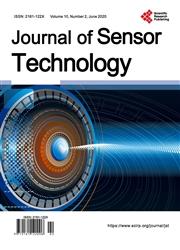Sensor Localization in Three-Dimensional Space
引用次数: 1
Abstract
Thanks to key advances in wireless communication and electronics, sensors have emerged as an appealing technology for several interesting applications, such as civilian (health and environment monitoring), natural (disaster detection), military (battlefield surveillance), and agricultural (precision agriculture) applications, to name a few. When grouped together, these sensors form a network to measure and gather data of the surrounding environment with respect to a specific phenomenon. The sensors are battery-powered, tiny devices that possess all the characteristics of a traditional computer, including storage, processing, and communication capabilities. In addition, these sensors are capable of sensing the environment and collecting data regarding several parameters, such as temperature, light, sound, vibration, etc. Unfortunately, all the sensors' capabilities are limited due to their physical size. In particular, the sensors have limited battery power as usually they are equipped with AA/AAA batteries whose lifetime is short. Therefore, the main challenge in the design of this type of network is the sensors' battery power (or energy), which is a critical component for the operation of the whole network. Moreover, these sensors communicate (possibly) wirelessly with each other to collect sensed data and accomplish the goals of their missions. To this end, the sensors are required to know their locations and those of their neighbors. Therefore, sensor localization is a crucial aspect for the design and development of wireless sensor networks. Various algorithms and protocols have been developed for sensor localization in both two-dimensional and three- dimensional wireless sensor networks. However, the problem of sensor localization in a three-dimensional space has not been investigated in the literature as extensively as its counterpart in a two-dimensional space. In this book chapter, we propose to study the sensor localization problem in three-dimensional wireless sensor networks. More precisely, this book chapter's sole focus will be on three-dimensional sensor deployment, and it aims to provide an overview of the existing solutions to the localization problem in a three-dimensional space. Basically, it proposes a classification of localization algorithms, and discusses different three-dimensional sensor localization approaches along with their motivation and evaluation.三维空间传感器定位
由于无线通信和电子技术的关键进步,传感器已经成为一些有趣应用的吸引人的技术,例如民用(健康和环境监测)、自然(灾害探测)、军事(战场监视)和农业(精准农业)应用,仅举几例。当组合在一起时,这些传感器形成一个网络来测量和收集有关特定现象的周围环境的数据。这些传感器是由电池供电的微型设备,具有传统计算机的所有特征,包括存储、处理和通信能力。此外,这些传感器能够感知环境并收集有关几个参数的数据,如温度、光、声、振动等。不幸的是,由于它们的物理尺寸,所有传感器的功能都是有限的。特别是,传感器的电池电量有限,因为它们通常配备的是寿命较短的AA/AAA电池。因此,这种类型的网络设计的主要挑战是传感器的电池功率(或能量),这是整个网络运行的关键组成部分。此外,这些传感器(可能)彼此之间进行无线通信,以收集感测数据并完成其任务目标。为此,传感器需要知道自己和邻居的位置。因此,传感器定位是无线传感器网络设计和开发的一个重要方面。在二维和三维无线传感器网络中,已经开发了各种用于传感器定位的算法和协议。然而,三维空间的传感器定位问题在文献中还没有像在二维空间中那样广泛地研究。在本章中,我们提出研究三维无线传感器网络中的传感器定位问题。更准确地说,本书章节的唯一重点将放在三维传感器部署上,旨在概述三维空间中定位问题的现有解决方案。主要对定位算法进行了分类,并讨论了不同的三维传感器定位方法及其动机和评价。
本文章由计算机程序翻译,如有差异,请以英文原文为准。
求助全文
约1分钟内获得全文
求助全文

 求助内容:
求助内容: 应助结果提醒方式:
应助结果提醒方式:


